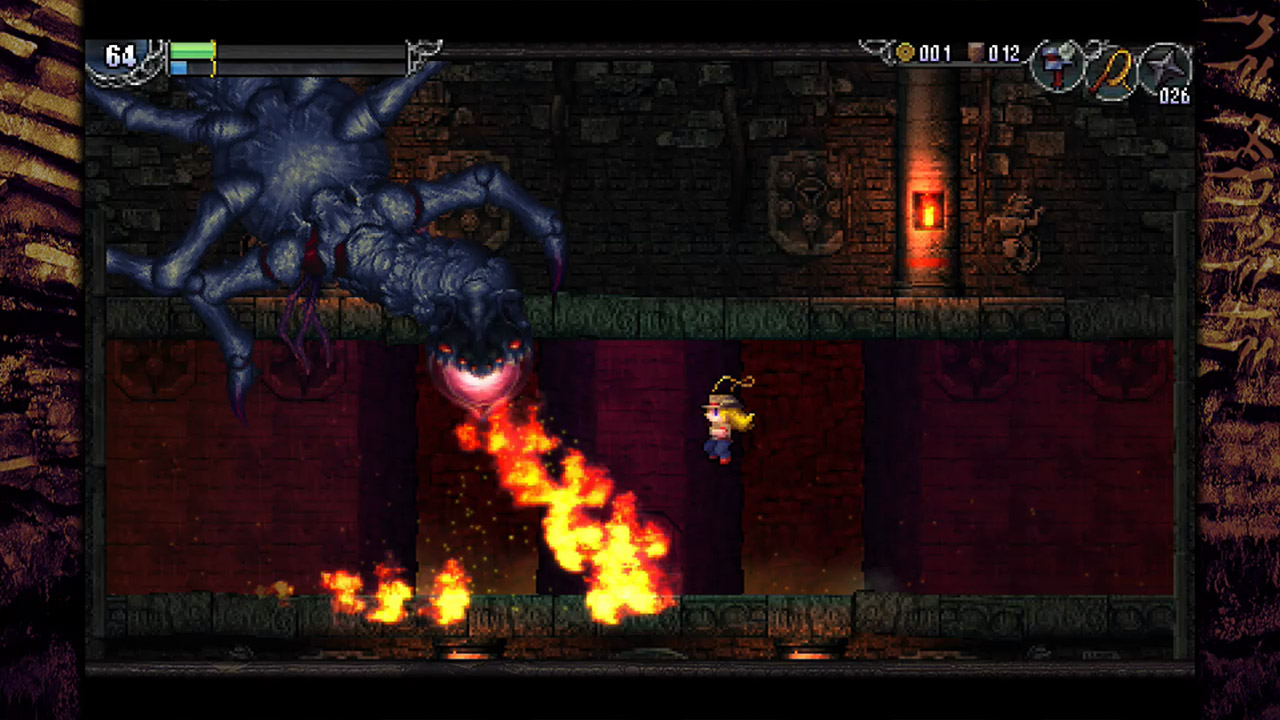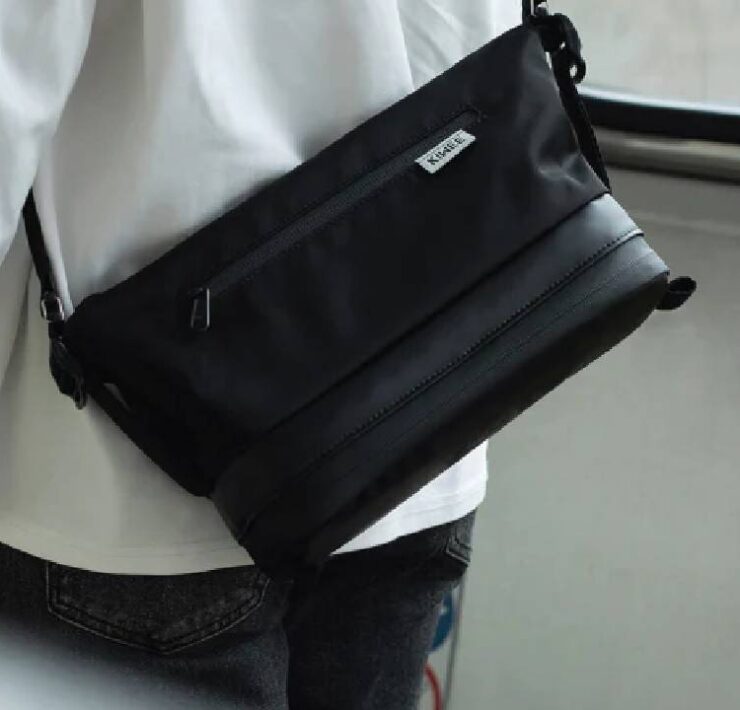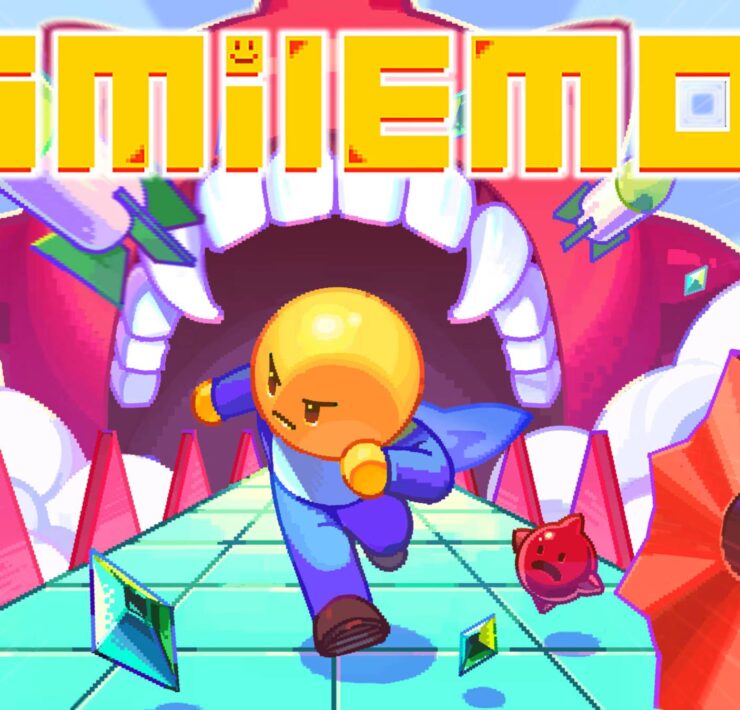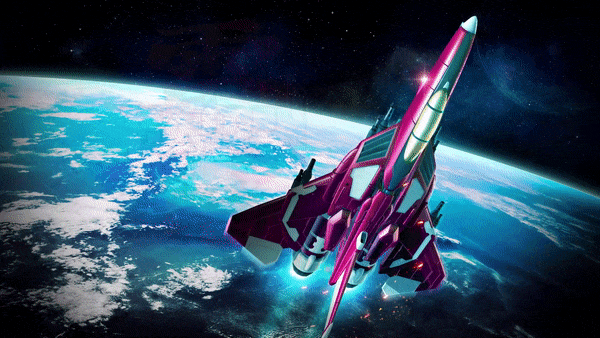La-Mulana 1 & 2 Switch Review – Punishing Exploration

La-Mulana is one of those series that you both seemingly respect as a gamer and want to stay away from. It is a punishing series that reminds us of the days of old, and it is precisely in this oldschool gameplay that brings La-Mulana and its sequel into the limelight of the gaming world. It is a series that took risks with its difficulty and gameplay, but in the end, it works out so well and provides a challenge unlike any other in the modern age.
Thankfully, the Switch has received both games at once, so you will be able to burn your masochistic desires at home or on the go. But how do these games fair? Are they worth your time and energy? Let’s find out.

Since I am reviewing both games at once, I will do my best to combine the elements of both games.
When it comes to story, both La-Mulana and La-Mulana 2 do a superb job at building a humongous world full of lore, characters, and secrets. It is amazing the amount of time that went into both games when it comes to world-building, and it absolutely pays off. I constantly found myself investing in all of the random side stories, and it was really cool to meet all of the random characters spread throughout the world.
Both games are about archeologists trying to discover something, whether it be the Secret Treasure of Life or what happened to your dad. In La-Mulana 1, you play as renowned archeologist Lemeza Kosugi, and you have been tasked with unraveling the secrets of La-Mulana and getting your hands on a very prized treasure. In La-Mulana 2, you play as Lumisa, the daughter of Lemeza Kosugi, and your goal is to find your missing father.

Both games are strongly about searching through every nook and cranny you can find. They are deeply complicated stories that expect you to read and read and read. There are tons of notes about places, enemies, races, history, and more to help you dive deeper into its world and lore.
This can be damning at times, though, because ignoring notes or talks with people you meet can result in getting lost. Sometimes the biggest clue is in the smallest word, and if you blaze through the text, it is quite easy to lose your way. Since the world and stages are quite huge and intricately interconnected, wandering around and not knowing what to do can waste a lot of your precious time. With that said, please read texts and make notes. Thankfully, the Switch can take screenshots with the press of a button, so make use of that as well.
It truly is a massively complicated world, but in a good way. This is one of the reasons the La-Mulana series shines, because although its looks can be deceivingly simple, this is an incredibly deep game.

When it comes to gameplay, La-Mulana 1 & 2 are a lot of things. It is a 2D action-adventure; it is a platformer; it is a metroidvania; it is a puzzle game. Somehow La-Mulana masterfully executes all of these areas, and both games bring it all together to form a truly amazing game series like nothing else.
Both games start off simple enough. They do a great job coaching you in a handful of ways. You will be presented with barrels in front of you, so you need to learn how to get past them. You talk to various people in the village, and they tell you where you need to go and what needs to be done. And you also learn quickly things you cannot do yet, so you decide to dive into a new world and face the challenges ahead.
And boy are they challenging.
After the La-Mulana games let go of your hand, you are on your own. You need to figure out how to unlock doors and chests. You have to learn the hard way where you should not go. And your encounters with enemies is absolutely a trial-by-fire experience. The amount of times you will hit traps may be discouraging, especially if you hit the same trap multiple times (facepalm), but this is part of the grind. This is how La-Mulana and its sequel prepare you for the intensity that lies ahead.

As I mentioned in the story section, you need to search around and find clues. This is essential to the puzzle-solving that will often take place throughout the game. Learning the meaning of symbols will eventually become commonplace, and how to open doors and chests will be a bit more routine. At first, however, all of that can be quite stressful, particularly the apps you find and buy that help you collect more data and information.
But that is what makes these games so good. You dive into this insanely complicated labyrinth of sorts with no idea what you are doing. For some, it may take minutes, but for others, it may take hours to adjust to the level the game expects of you to take out the first major boss.
And boy are the boss fights awesome!

Each boss fight is epic. There are 10 Guardians in each game, and all of them are giant in scale and presence. But like most things in La-Mulana, there is a very particular rhythm to every boss fight. To prepare you for these Guardians, La-Mulana does an excellent job sprinkling around its various maps a series of mini-bosses that prepare your timing and reflexes for those upcoming Guardians.
This is the type of intentional push that La-Mulana does not often get enough credit for. Although it is not holding your hand anymore after the first 10-15 minutes, it still encourages exploration enough where you find yourself confronted by bigger-than-average enemies that will immediately test your current abilities. Conquering each one of these mini-bosses feels great, and usually they reward you with some kind of item or access to a new area.
The metroidvania side of things is what I enjoy about La-Mulana and its sequel the most. Early in the games, if you pay attention, you will receive the Holy Grail, which allows you to fast travel to any save point you find throughout the game. As you progress, every new area will eventually earn you an item that can be used somewhere in a previous area. For completionists, this will set up all the right triggers and make the games so much bigger than simply clearing the main route and story.

The only thing I dislike about La-Mulana is the jumping. Since it is part-platformer, there are many times where you are expected to make some tight jumps. However, La-Mulana is very strict in its jumping. If you are moving, then you can adjust your jump and movement while in the air, similar to a Super Mario title. But if you are standing still and jump, you are not able to move until the apex of the jump. This can make certain platforming very frustrating, and even after you get used to this style of jumping, it does not take away the frustration of being punished harshly for not having any momentum in your jump, especially when you fall by mistake or through a trap and you cannot change direction at all. It is just a straight fall.
Since this is a major part of the game, it does make things a bit more difficult in a seemingly unfair way. Thankfully, checkpoints and saves are spread around well, so poor deaths from bad jumps should not affect you too much. Just remember to get that Holy Grail as soon as you can, because otherwise, you need to save manually each and every time. You have been warned.
The music throughout both La-Mulana games is fantastic. Each new area feels unique, and the music is a big reason for that. The way the games set the tone for every environment should be applauded, because it never feels out of place.
The sound effects also are quite effective and give the world a lot more substance. Because of the wide variety of enemy types and bosses, hearing their differences was truly impressive. I would put it on par with a Pokemon game and how they differentiate the different monsters and their growls.

And in Zelda-like fashion, discovering new items and opening treasures rewards you with such a pleasant jingle. It makes the discovery something to truly long for throughout the game.
Visually, La-Mulana and La-Mulana 2 both have smooth bit-type graphics akin to games from the Super Nintendo. Both games even have side bars to squeeze the screen down to a more oldschool feel. Although I would have preferred a wider screen, I appreciate the aesthetic and desire to create an old-feeling game for the modern age.
The graphics look beautiful, too, especially the character and boss sprites. Bosses almost take up the entire screen, and they look amazing. Characters you meet throughout the game will be displayed with still visuals, and the artwork used for these is serviceable.
You can buy both games individually, and they are not so cheap. La-Mulana will cost you $14.99, and La-Mulana 2 will be $24.99. Considering the age of the original, I am surprised by the price tag. However, La-Mulana 2 is a great addition to the Switch library as it is still a fairly new title that just made its way to consoles recently.

After spending quite some time with both titles on the Switch, though, I can boldly say they are both absolutely worth their prices. Despite the original game’s age, it is still a stellar game that will provide hours and hours of gameplay and fun. La-Mulana 2 is an improvement in just about every way from the original, and although that $24.99 price tag can seem a bit steep, the game guarantees to give you at least 15 hours of gameplay. If you are a completionist, then you are looking at around 40-50 hours.
If you are a fan of this genre and are looking to sink your teeth into a game series that will test your might, La-Mulana and its sequel are worthy contenders. If you have already played the original and are wondering about the quality of La-Mulana 2, I can promise you that it is a great step forward for the series.
La-Mulana 1 & 2 Review provided by Nintendo Link
Developer: NIGORO
Publisher: NIS America
Release Date: March 17, 2020
Price: $14.99 & $24.99, £13.49 & £22.49, €14,99 & €24,99
Game Size: 2.4GB

Deep and fluid story
Huge and awesome bosses
Hours and hours of gameplay
Wonderful soundtrack
Major dependence on note-taking
Easy to get lost
Clunky jump mechanics
What's Your Reaction?
My name is Jason Capp. I am a husband, father, son, and brother, and I am a gamer, a writer, and a wannabe pro wrestler. It is hard to erase the smile on this simple man.












